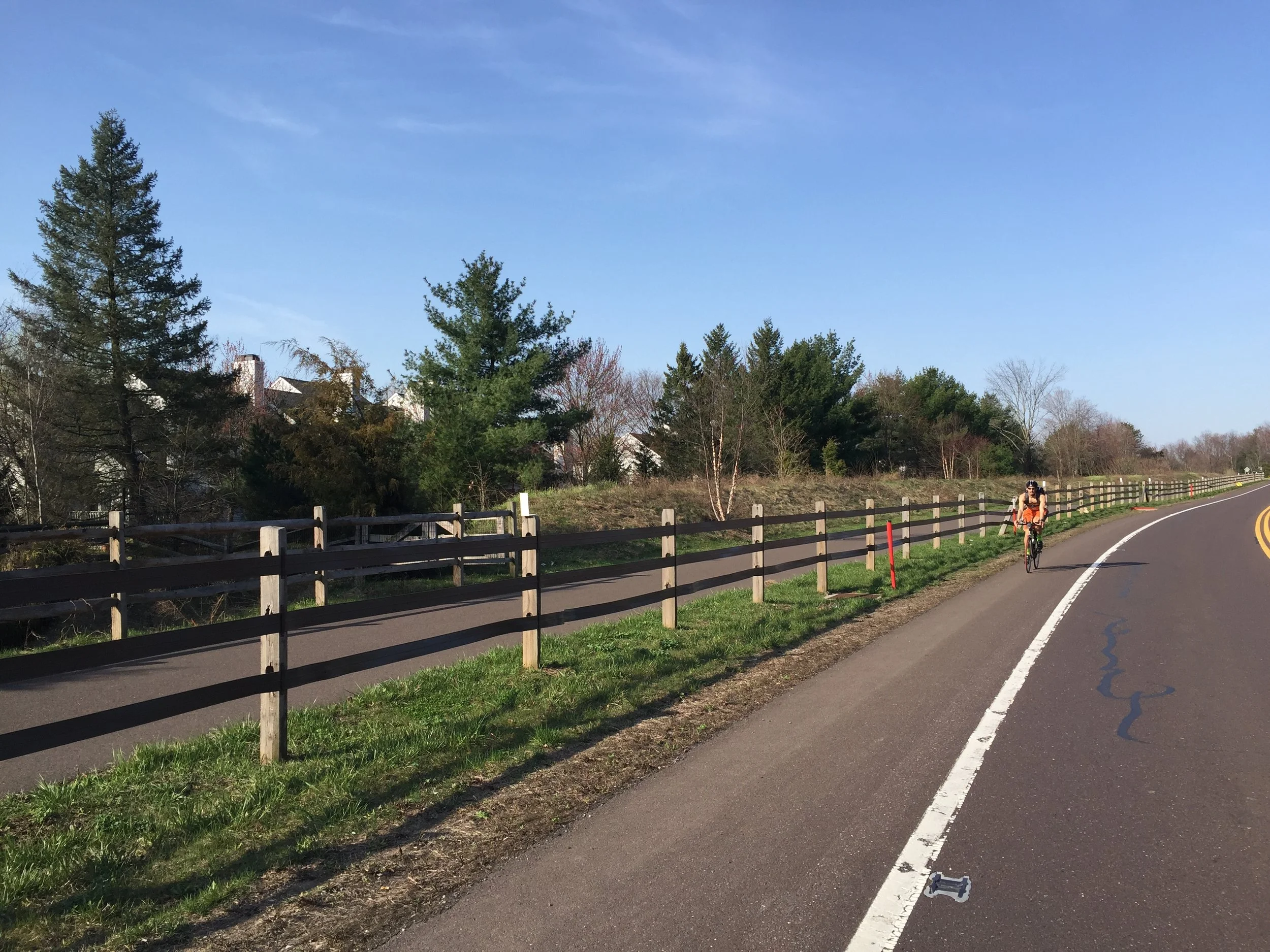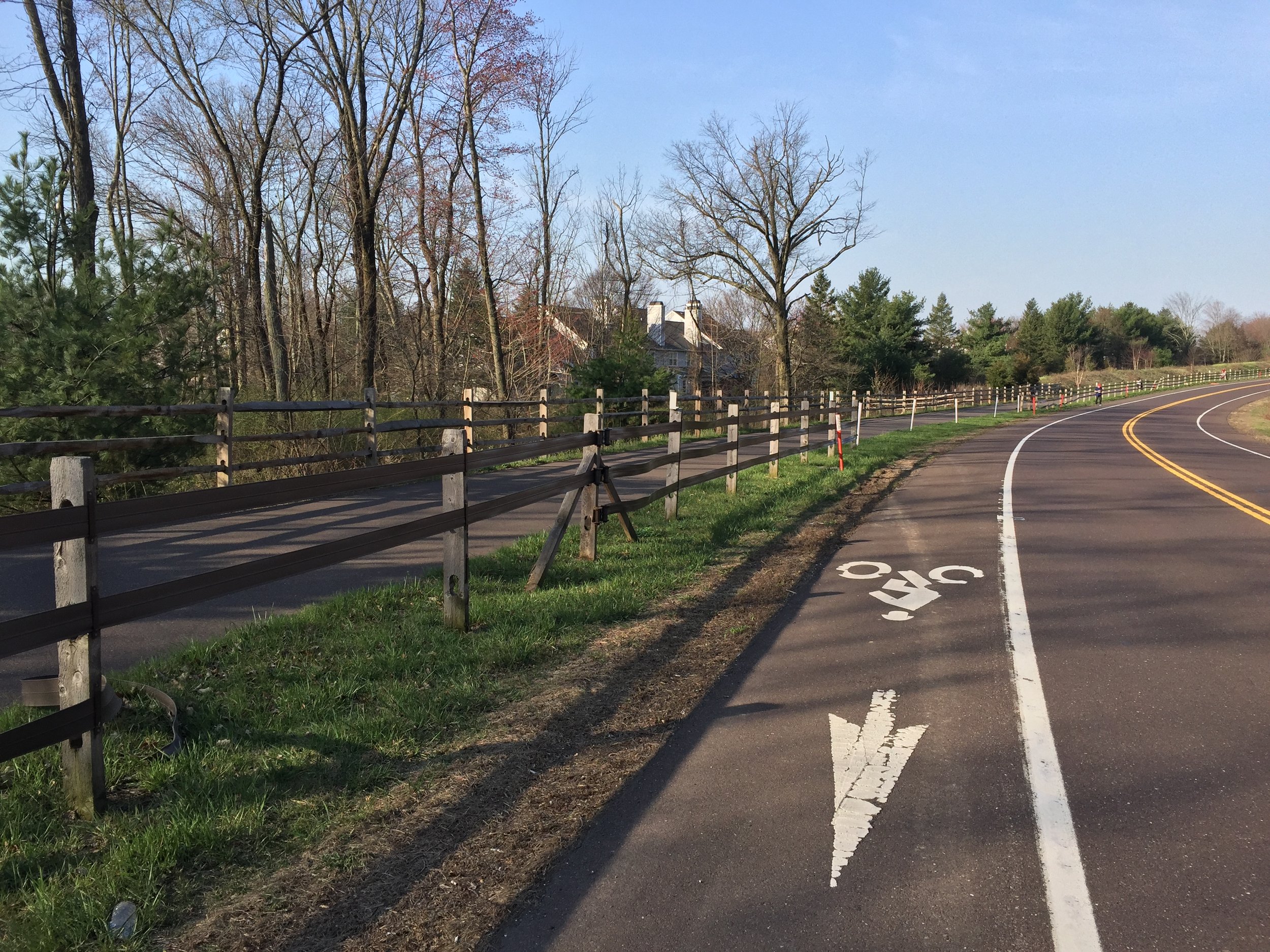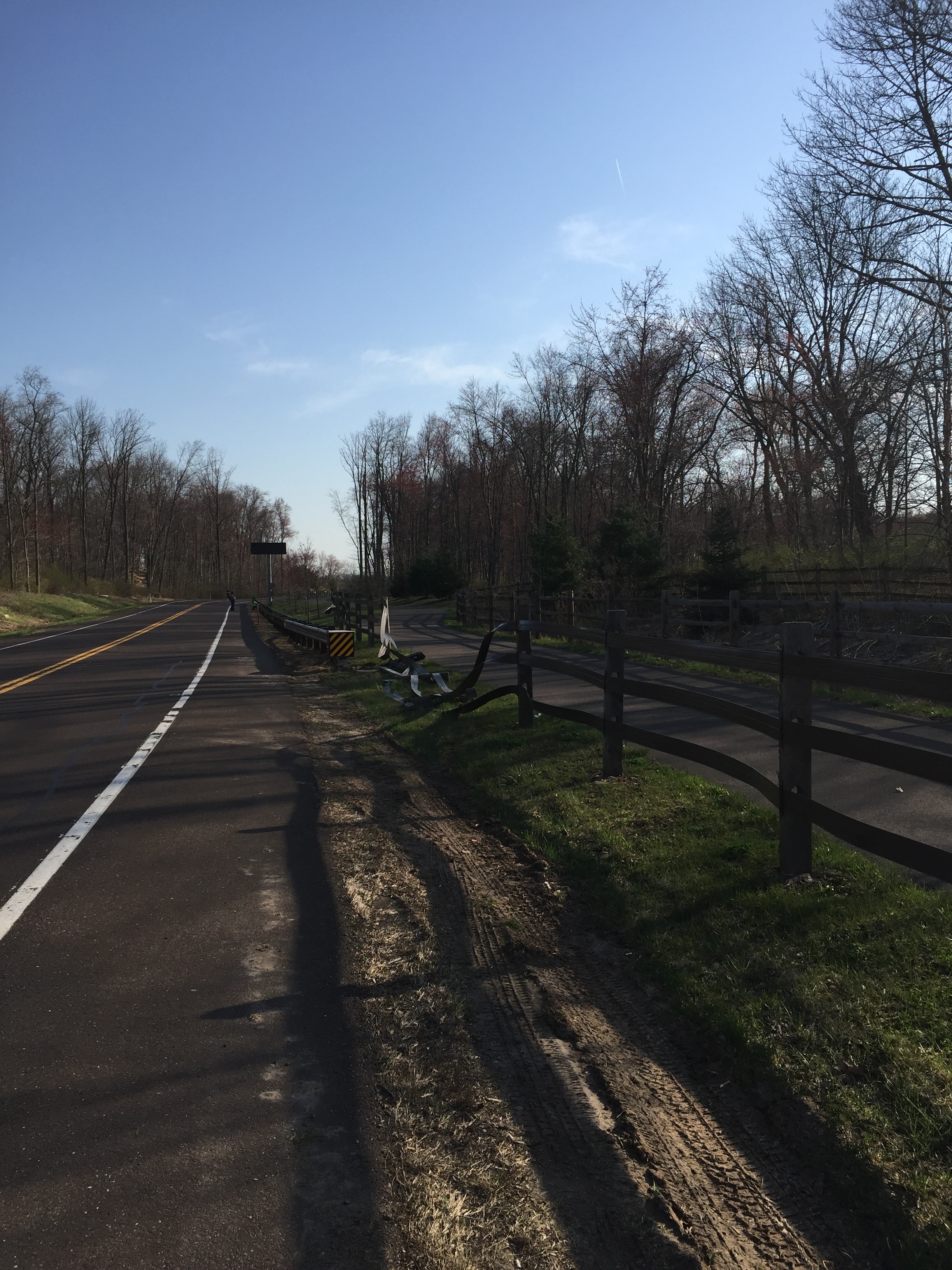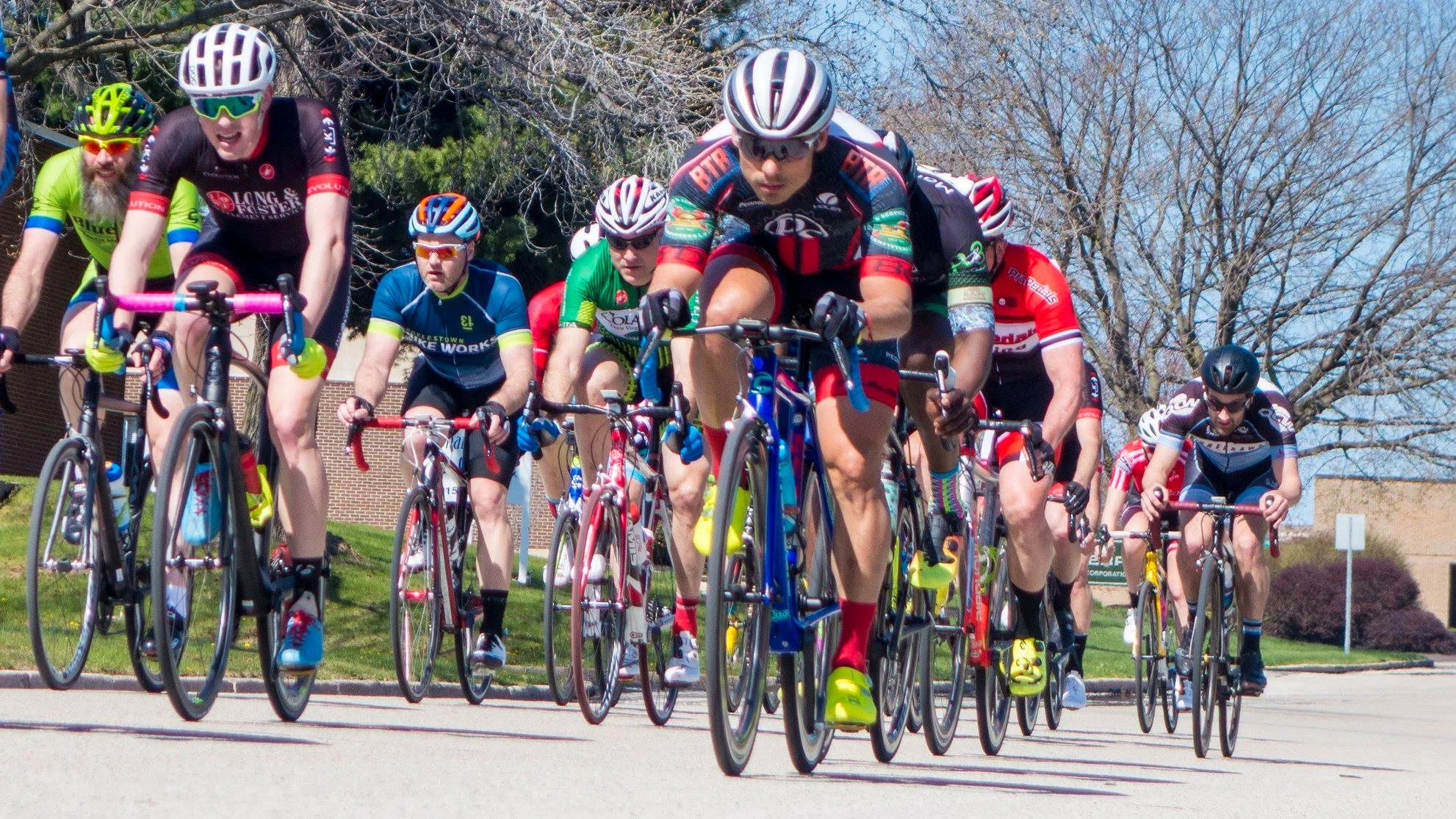Essay: On the Great Bike Lane Debate
(2018) For residents of our area, the debate started in late 2012 with the opening of the much-argued-over route 202 bypass. The bypass highway, once referred to as the Piedmont Expressway, had been laid fallow by four decades of back and forth bickering and debating. While many people wanted a high volume road to simplify getting around the county, people wanted to make sure it didn’t impact them, as sort of Nimbyism. Potential homeowners were alerted a property was in the crosshairs when land was needed for the roadway, but they went ahead and purchased anyway.
This two generation argument left a strange fixture in our area. To circumnavigate Doylestown, one got on the briefest of four-lane highways that either intersected with a hamlet stoplight, forced one onto an exit ramp, or stare at a pile of stones with a Road Closed sign wedged into it. It was the strangest of feelings to get on what felt like a superhighway for a short amount of time before avoiding multiple roads going nowhere.
What finally connected the roadways felt like an endless chain of compromises, few of them remarkable. The bypass, today referred to as the 202 Parkway is a two- lane affair for the most part. The road is extremely winding with narrow sightlines. The presence of regular median planters does not help the reduced visibility. And then there’s the speed limit. For a motorist to actually attempt to do the posted speed limit of 40 miles per hour would equate in being run over by a stampede of impatient motorists.
Attached to the side of the Parkway are three items of note: immediately painted onto the shoulder is a bike line. Paralleling the road proper is a multi-purpose lane initially intended for walkers and runners. In between these two paved areas is an expensive length of split rail fencing on a laughable strip of grass. Bike lanes have been increasing in presence around the Doylestown region and the bypass was not to be left out. One could ride her bike from Doylestown to Montgomery County some ten miles hence without exiting a bike lane. That is certainly progress from two decades ago.
The 202 Parkway has a bike lane that parallels numerous areas where motorists have left the roadway. Here are the plastic staps that replaced the split rails. In the middle ground are the vacant places where the fence was abandoned in favor of reflector poles.
But no sooner did the 202 Parkway open then it had its first issue. For starters, the first accident on the Parkway was within the first few hours. With its fluctuating elevation cars went much faster than the posted speed limit. This led to crashes – or at the very least – people regularly leaving the roadway. It is obvious where crashes happened as the split rail fences became a weekly casualties.
As a matter of fact the split rail fence was busted up so badly that PennDOT made a decision. Due to the repair costs of the fence the split rails were abandoned in favor of brown rubber straps. The aesthetic appeal of country living was vacated by something easier to repair when a motorists left the road. But cars went off so frequently that even the straps were even abandoned in places. Either reflector poles or no barriers at all now occupy places delineated by a good ol’ wooden fence.
With the frequent concerns of motorists incapable of keeping it between the lines so to speak, another concern is presented. With the passing of winter there should be road treatment debris in the bike lane. In numerous areas pebbles turn the bike lane a darker shade of gray except in the right-hand bends along the road. Here is where car tires have scrubbed the bike lane of debris to leave it pristine. Or here’s another way to think of it: here is a spot where a cyclist riding in the bike lane could be clipped by a car. Whether that car is intending to remain on the roadway is a mathematical gamble.
Here is an example of recent damage to the plastic strap fence. This was taken from the bike lane.
This is the debate that has been popping up from time to time in the cycling circles. Should cyclists in this area be stubborn and insist on maintaining a presence in the bike lane along the 202 Parkway? Shortly after the opening of the Parkway cyclists quickly abandoned the bike lane in favor of the walking/ running lane on the other side of the split rail fence. This caused protests from walkers who predictably responded to the presence of cyclists by figuratively pointing to the bike line. Cyclists responded with literally pointing to the tire marks from the roadway, across the bike lane, and coming to a rest in the grass or beyond. Had a cyclist been following the rules at the time of the motorist’s ‘off’ it could have been a bad day for him.
The debate does not end there. Some cyclists have stated the risk of riding in the bike lane is not worth the reward of being considered a member of traffic. This creates the question of what happens to the validity of bike lanes when cyclists avoid them for safety reasons? Certainly the 202 Parkway planners wouldn't consider this a safe egress. The debate rages if cyclists abandon the cycling lane, will there be a waterfall effect along other cycling corridors, a ‘brushing back’ so to speak?
I have found this infrastructure vastly convenient to access roads that used to be too risky to get to. The bike lane’s full distance was once utilized to the creakybottombracket team car the day after a cab was hailed to get home post-wedding. Without the bike lane, it would not have been as easy to problem solve a stranded vehicle so far away before the 202 Parkway’s bike opportunity. Even yours truly opted for riding on the walking/ running path despite puffing out the chest and stating the cycling lane would be utilized. It’s one thing to be confident in one’s own cycling abilities; it’s another to question the ability in motorists moving much faster than the speed limit and struggling to stay in the car lane.
It’s hard to foresee the impact of cyclists avoiding a bike lane on a heavily traveled roadway. Should cyclists prioritize stubbornness over safety by populating the bike lane to get motorists to look for riders? Or should we pick our battles and move over to the walking/ running lane and cut our speed, thus reducing some of the enjoyment of the outing? Either way the implications are clear on both sides. Having cyclists shy away from a bike lane because of even more stubborn motorists could set a dangerous precedent for future bike lanes. Then again, if we use the walking path, at least we’ll be around to lobby for those future bike lanes.
Photos were taken during a recent closure of the 202 Parkway for a 5k/ 8k running race. This is why there are no cars in the pictures.






